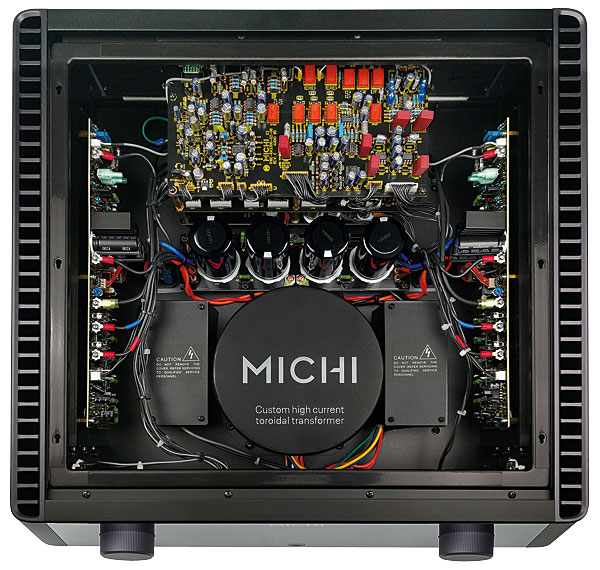Rotel Michi X3 Series 2 Integrated Amplifier

 Rotel's 'entry-level' Michi integrated, now in Series 2 guise, features multiple component updates – including switching to an ESS DAC – while retaining its huge power output
Rotel's 'entry-level' Michi integrated, now in Series 2 guise, features multiple component updates – including switching to an ESS DAC – while retaining its huge power output
Listening to Rotel's Michi X3 Series 2 reminds me of that popular paranormal radio series Uncanny: I'm sure the amplifier's all-black, slightly menacing presence is in my listening room, though the sceptical view says it shouldn't exist. After all, some months back Rotel reorganised its distribution in mainland Europe, but with no mention of what was happening in the UK. A conversation with Rotel's distributor at the time, Bowers & Wilkins, had indicated that the lawyers were busy, and things were set to change.
Intrigued that the Series 2 versions of the X3 and X5 integrated amps, and the P5 preamp, were announced back in April, since when everything had gone a bit quiet, we asked the same question of the PR company supplying the £5999 X3 Series 2 you see here. The response still indicated a state of some flux – cue that theme from Uncanny, with the ethereal voice singing 'I know what I saw...'.
Interior Refresh
Since the original X3 proved itself to be entirely spectacular [HFN Apr '21], and bearing in mind Rotel's proven track record, we're undertaking this exclusive review in the firm assumption that the S2 separates will soon be back on sale in the EU and UK. Over the last year or two many of parent company Rotel's products have been upgraded to MkII status, with updates in component selection, including the DAC technology. That's also the case here, along with a jump in price from £4300 to £5999, while the 'big brother' X5 increases by 30% to £8199 in Series 2 form.
What's new? Well, the headline change here is in the DAC, with the original AKM AK4490EQ part replaced by a member of the seemingly ubiquitous ESS Sabre family – specifically the eight-channel ES9028PRO run here in current mode with a custom I-to-V stage and low-pass analogue filter. The digital input switching and clock circuits have been further optimised while the XMOS-based USB input now handles quad-DSD (11.2MHz) as well as MQA streams. As an overall 'upgrade package' Rotel cites no fewer than 96 component changes within the analogue circuits alone, adding that, 'power supplies and audio circuitry have been re-engineered to render music with increased precision and detail with an even more immersive soundstage'.

For all that, even a close inspection reveals little of what has been changed: comparing the 'lid-off' views of the original and S2 versions of the X3, both of which are constructed around a fully screened, in-house wound toroidal transformer, is like one of those slightly fiendish 'spot the difference' challenges.
Black Beauty
There's no physical badge on the front of this new model to set it apart, just a little 'S2' logo on the rear. Meanwhile, the display briefly shows 'Series 2' when you fire the amp up – blink and you'll miss it. What's more, the facilities here are seemingly identical to those of the original, save for that DSD, MQA and now aptX HD wireless BT functionality. Even the performance on PM's lab bench was all but unchanged, with only a few very small variances for the better centred around that new digital section.
The Michi X3 Series 2 remains an understated-looking, impeccably built and entirely solid integrated amplifier, tipping the scales at just short of 29kg, or almost 64lb in real money. From the well-judged use of matt and gloss black to the enclosed heatsinking either side of the casework, everything here is of reassuringly high quality, all the way through to the robust socketry to the rear, where the dual sets of speaker outputs are made to Michi specifications, substantial and now platinum- rather than rhodium-plated.
The input provision is as comprehensive as before: the digital section has three coaxial inputs and three optical, plus a USB-B for access to computer-based music files. There's then an MM phono input, three sets of analogue inputs on RCAs, preamp outputs and a pair of mono subwoofer outputs, plus a full-size 6.35mm headphone socket fitted to the front panel. An Ethernet port for network control (not music playback), and USB-A for firmware updates, complete the set.

















































